
Rare disease treatments are riding high as patient adcovates, pharma companies, and government officials celebrate the ODA's 25th anniversary
Jill Wechsler is Pharm Exec's Washington Corespondent

Rare disease treatments are riding high as patient adcovates, pharma companies, and government officials celebrate the ODA's 25th anniversary
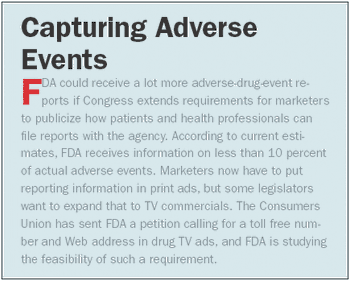
FDA is being pressured to get its act together. The agency says it needs more money and more people to get approvals out the door
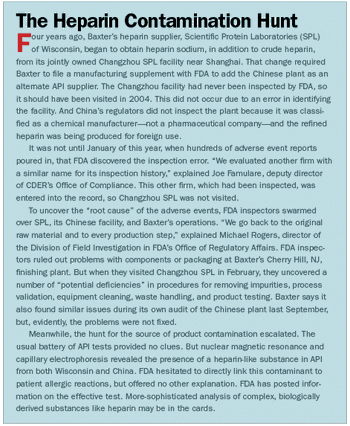
International outsourcing carries risks for marketers and regulatory challenges for FDA

Congress is firing plenty of ammunition at pharma companies-and the regulators

Congress blocked DTC user fees, Reagan-Udall, field force reforms while slightly bumping FDA's budget

Pricing, safety, comparative effectiveness, patents, and biosimilars top 2008's policy agenda

The ultimate goal is for the medical system to develop new evidence as a natural by-product of delivering appropriate care

FDAAA aims to restore public trust in drug safety regulation but may curb investment in R&D

There has been a lot of good news about the Medicare drug benefit in recent weeks. Surveys show a substantial increase in coverage, particularly among low-income seniors. Costs are less than expected; employers continue to offer retiree benefits; major insurers are sticking with the program; and product coverage remains fairly broad. Beneficiaries seem generally satisfied with the program, and the much-feared "doughnut hole" appears less lethal than anticipated (see "A Narrow Gap").

As expected, must-pass legislation to reauthorize the Prescription Drug User Fee Act (PDUFA IV) has provided a vehicle to renew numerous programs and to establish new policies to ensure the safe use of medications. The measure implements a user-fee agreement issued in January 2007 as well as a similar user-fee plan for medical devices. It also continues incentives for sponsors to study pediatric uses of drugs and devices and gives FDA authority to require postapproval studies. Manufacturers will have to disclose more information about ongoing clinical trials and research results and must revise product labels within a set time frame. There is more funding for FDA oversight of postmarket drug use and for agency information systems. And manufacturers of more risky medications will have to adopt a range of pharmacovigilance activities to ensure appropriate product use.
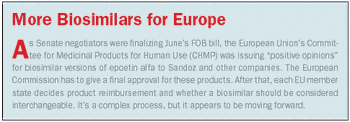
Twelve years is probably "the best deal the industry is going to get," comments former FDA official Scott Gottlieb. "This is a genuine compromise."

The danger is that effectiveness studies could be used to limit coverage to low-cost products and that additional research requirements for sponsors could be costly

There's tremendous opportunity for us to understand how drugs can be used even better to get the right outcome, not only how to contain them in order to avoid complications or adverse events

The push is on to establish an approval pathway for generic versions of biotech therapies. The Hatch-Waxman Act of 1984 established a process whereby generic-drug manufacturers could obtain approval for a product based on the innovator company's data. But Hatch-Waxman doesn't apply to biologics regulated by the Public Health Service Act, and generics makers-as well as some Big Pharma companies and small biotech firms-want Congress to give the Food and Drug Administration authority to set up a similar process for these products as well.
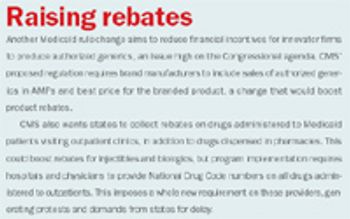
All the hoopla about Medicare drug prices is overshadowing the real action in pharmaceutical pricing: a less-noticed exercise that aims to reduce reimbursement for medicines purchased by state Medicaid programs. Retail pharmacists say the proposed changes will put them out of business, and pharmacy benefit managers (PBMs) fear an end to discount negotiations.

Critics asked for a reevaluation of new drugs a year after launch. FDA's plan to issue report cards on new drugs responds to that demand-but not completely.

Democrats want more transparency from pharma, and Republicans also are making noise about pricing. But government drug reimbursement is hard to get right and often creates perverse patient care incentives.
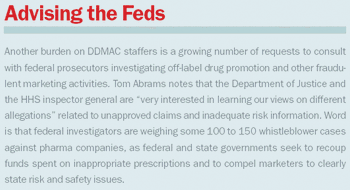
Long turnaround on ad reviews adds new complications to the process of developing marketing plans.

Pharmacists have applauded Plan B's behind-the-counter status, and FDA hints that the drug might pave the way for more pharmacy-only OTC products.
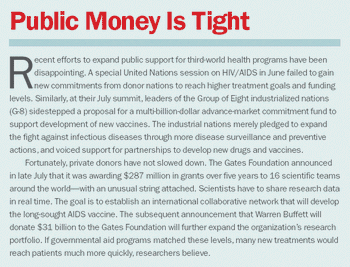
The PPP approach asks pharma to identify promising drugs and conduct pre-clinical tests, instead of paying for costly late-stage clinical trials.

If I ran the FDA, I'd have a Rose Garden ceremony for all the histleblowers in my agency. No one can know where all the skeletons are buried. We ought to honor every one of those patriots.

Pharma restrictions of sales tactics vary from state to state, creating new compliance challenges.

Pharma companies fear CMS' new Medicare policy will routinely require post-approval studies in order to gain reimbursement for new drugs. CMS says it is expanding payment for "promising but not persuasive" drugs.
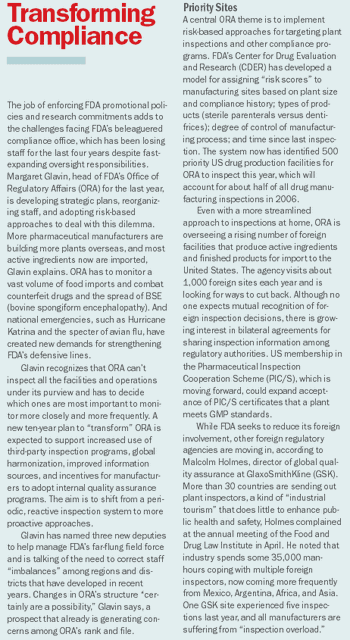
Pharma follow-through? As of September 2005, drug manufacturers had promised to perform 1,200 post-marketing studies. Companies hadn't even started 65 percent of them, and only 200 were completed.

The pharmaceutical companies in the Predictive Safety Consortium have agreed to cross-test each other's laboratory methods to determine which are most effective in detecting kidney, muscle, and liver toxicity.
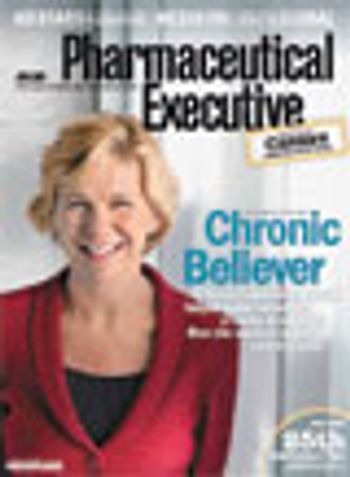
FDA doesn't usually write a black box warning "without some pretty good data," said Robert Temple of FDA's Office of Medical Policy. Overuse of the black box can both dilute its impact and limit access to needed treatment.

Pharmaceutical companies are worried that FDA's new labeling format will expose them to liability suits from individuals who suffer adverse events that are not highlighted, but "hidden" in the full prescribing information.

While CMS officials praise the CED policy as a way to extend Medicare coverage, patients and industry fear the agency won't reimburse for innovative treatments unless sponsors support post-approval studies.
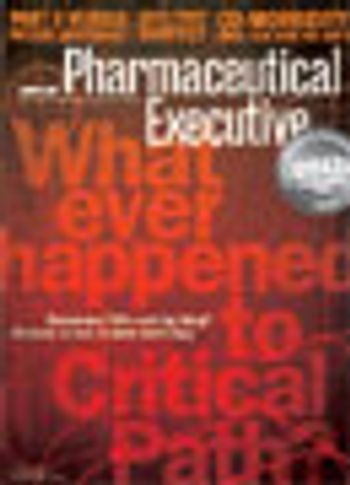
To Janet Woodcock, Critical Path hasn't been dying, it's been getting work done."People shouldn't underestimate the difficulties of creating new models. A lot of things worth doing can't happen quickly."

FDA wants flexibility to use user-fee revenues to extend drug safety oversight, to review direct-to-consumer advertising before it goes public, and to modernize the ever longer and more complex drug development process.